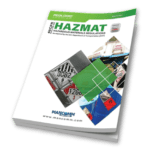One very important consideration when choosing UN packaging is chemical compatibility. Meaning, is your product compatible with the container, cap, absorbent, and/or outer container that you are using?
This step is clearly referenced in the regulations.
TDG – TP14850 Part 2, 12.9 states:
12.9 Compatibility Test – Compatibility of the container with the dangerous goods must be demonstrated by successfully passing the compatibility test unless such compatibility is demonstrated by successful user experience.
12.9.3 Criteria for a successful test — The tested containers must not show signs of stress cracking or crazing, oxidation, embrittlement, vapor pressure build-up, collapse of walls, seepage, or other defects likely to cause or indicate premature failure after storage. The tested containers shall successfully pass the drop, stacking, and, where applicable, internal pressure and leakproofness tests in accordance with the requirements of chapter 7.
49 CFR – Part 173.24 (e) (1 and (2) states that:
(1) Even though certain packagings are specified in this part, it is, nevertheless, the responsibility of the person offering a hazardous material for transportation to ensure that such packagings are compatible with their lading. This particularly applies to corrosivity, permeability, softening, premature aging, and embrittlement.
(2) Packaging materials and contents must be such that there will be no significant chemical or galvanic reaction between the materials and contents of the package.
IATA Part 5.0.2.6 states that:
Parts of packagings which are in direct contact with dangerous goods must not be affected or significantly weakened by those dangerous goods; must not cause a dangerous effect, e.g., catalyzing a reaction or reacting with the dangerous goods; and must not allow permeation of the dangerous goods that could constitute a danger under normal conditions of transport.
One thing to note is that it is the shipper’s responsibility to determine the compatibility of the packaging. Unfortunately, this is not something that a third party can generally determine. Therefore, before selecting a package, it is wise to test the packaging first—request samples from your supplier.
Watch for things like corrosion, degradation, permeation, etc.
Here are some videos to demonstrate what happens when something is incompatible:
Here at ICC, we, of course, cannot recommend chemical compatibility with your product. We will, however, be very happy to provide sample caps, bottles, or absorbent for testing purposes. Contact us today to ask how we can help.
Stay up to date and sign up for our newsletter!
We have all the products, services and training you need to ensure your staff is properly trained and informed.
 US 49 CFR Publications |
 Canadian TDG Publications |
 IATA Publications |
 UN Packaging |







 ICC USA
ICC USA ICC Canada
ICC Canada